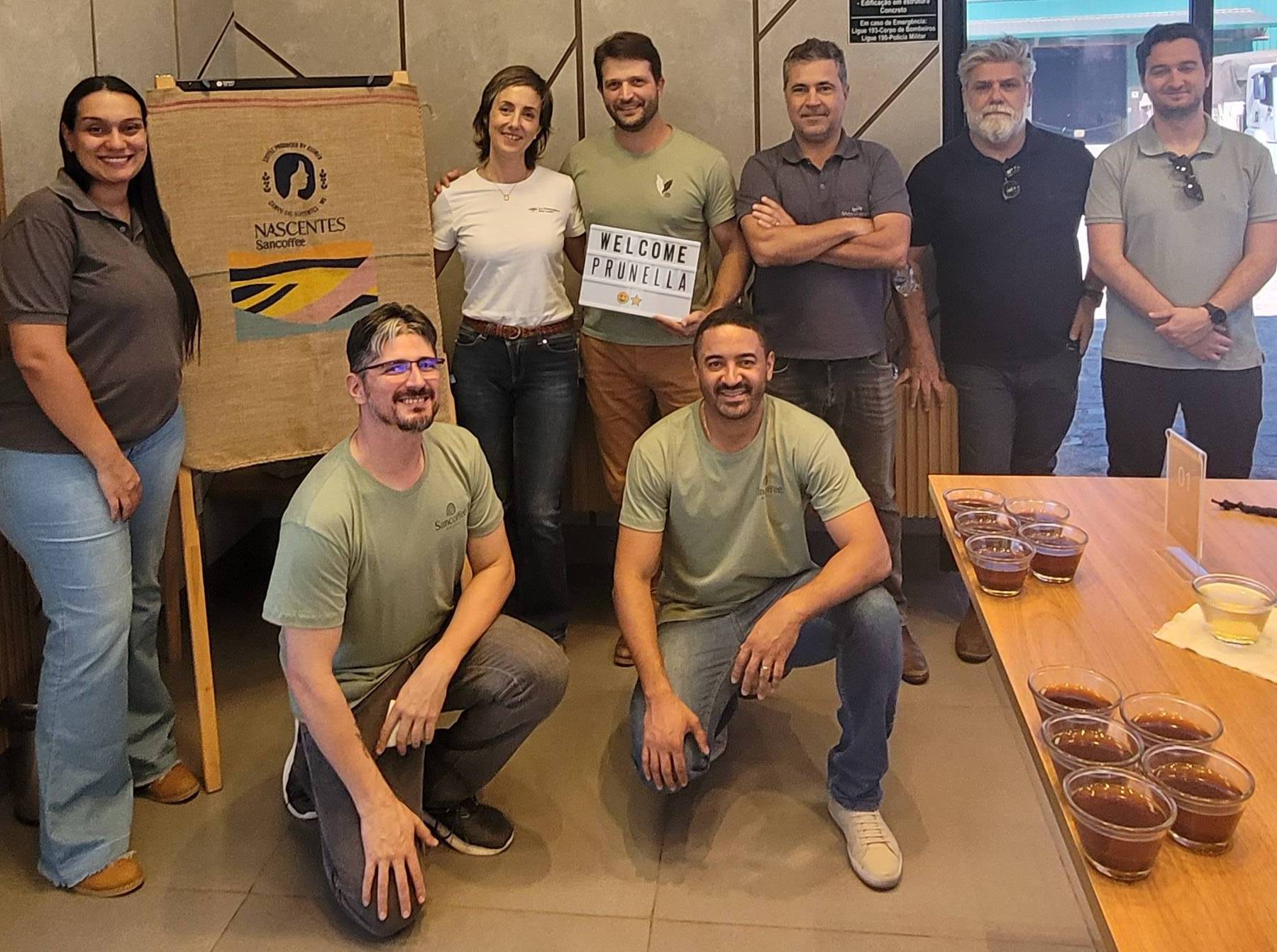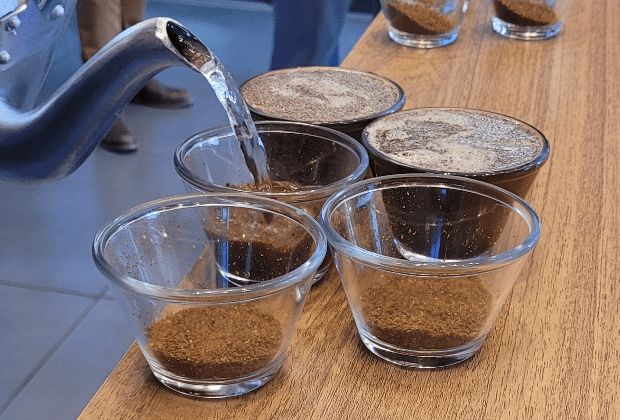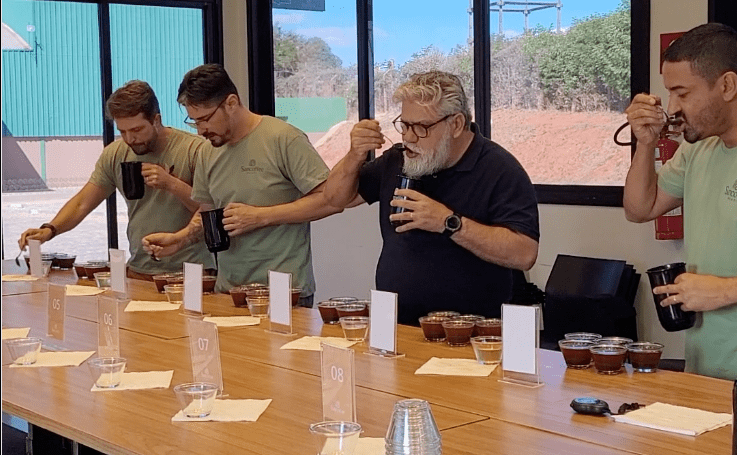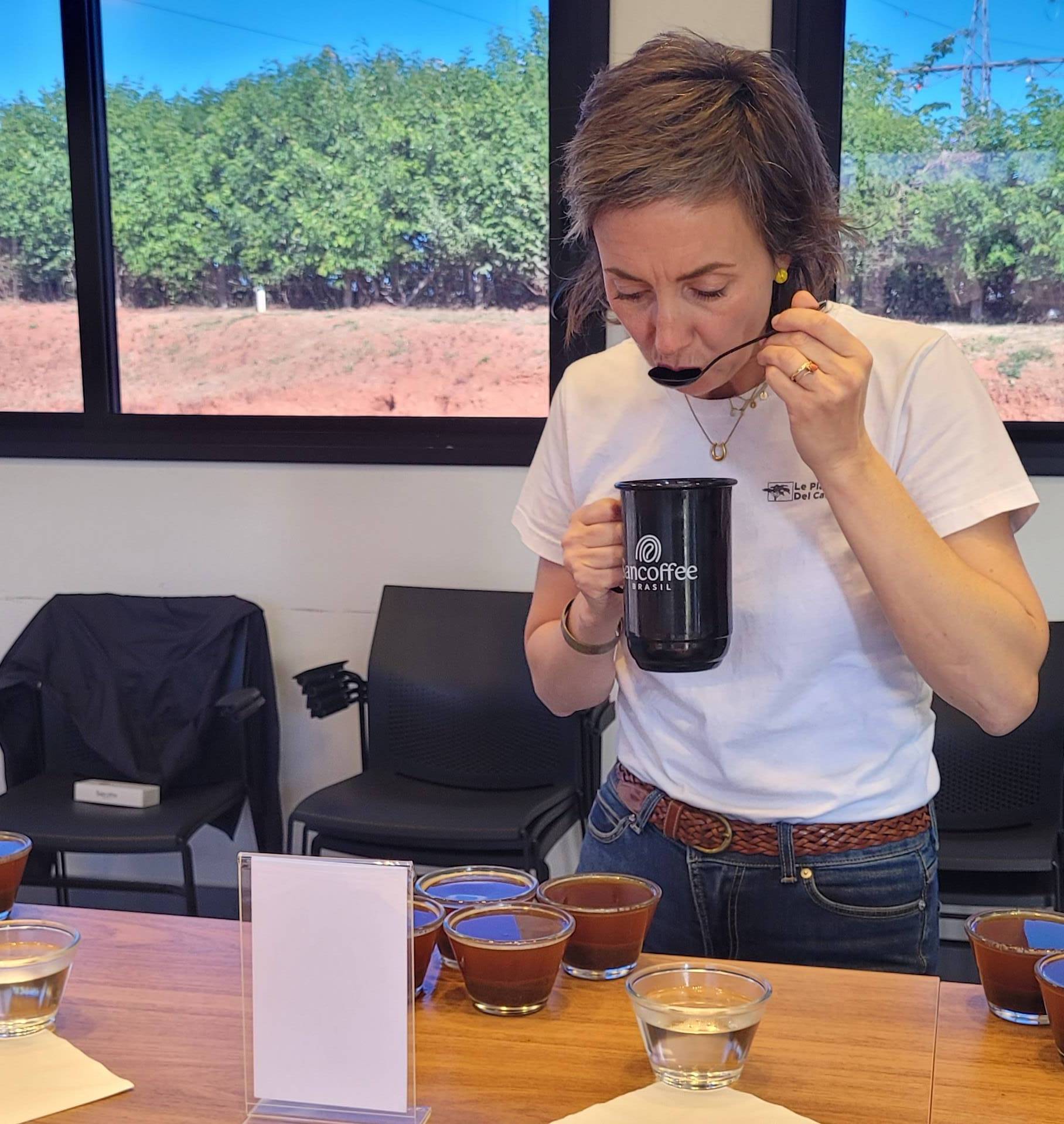Sancoffee Cooperative: social and environmental commitment
The last leg of my trip to Brazil took me to the Sancoffee Cooperative, an extraordinary company that received the prestigious Sustainability Award from the SCA (Specialty Coffee Association) in the For-Profit category this year.

Sancoffee is a B Corp, committed not only to the production of superior-quality coffee but also to environmental and social sustainability. For me, this experience was an exciting journey full of discoveries.
The Campo das Vertentes Region
Sancoffee is located in the region of Campo das Vertentes, in the heart of the state of Minas Gerais, about 200 km south of the capital Belo Horizonte. This region, whose name literally means “watershed fields”, lies between two important water basins in Brazil. Thanks to the fertile soil and abundance of water, agriculture soon arrived to the area, following the first settlers in search of precious metals. The coffee plant has adapted perfectly to this area, with farming of this crop dating back to 1860. More recently, the rich coffee tradition of Campo das Vertentes, together with the region’s unique landscape and microclimate, are receiving recognition with a new geographical indication.
The topography of Campo das Vertentes is marked by plateaus with an average altitude of 1030 metres above sea level and gentle slopes that allow for efficient automation. The climate has regular rainfall and mild temperatures throughout the year. The dry weather during the harvest season, with a wide range of temperatures, provides excellent conditions for the coffee ripening cycle.
Special encounters

During my visit, I got the pleasure of meeting with Fabricio Andrade, the CEO and the beating heart of Sancoffee, whom I had met before.
I then met Anaclaudia, the Relationship and Impact Manager. Her expertise and her passion for her work really impressed me.
I also got to talk with Ivaldo and Ramon, both professional cuppers. Their expertise and ability to perceive the nuances of each coffee was a real revelation.
Sustainability projects
Sancoffee is involved in several sustainability projects that demonstrate its strong social and environmental commitment.
Bio Recovery Project
As part of their environmental commitment, Sancoffee members created the Bio Recovery project to preserve the nature and rich biodiversity of Campo das Vertentes. This project aims to restore areas that have been deteriorated in the past, through the cultivation of seedlings, the planting of native trees and the protection of water sources.
Beyond Borders Program
As part of their commitment to having a broader social impact, Sancoffee created the Beyond Borders Program in 2012. This program offers Sancoffee’s expertise to small coffee farmers in local communities and provides market access tools and ongoing technical support. Families are enjoying greater recognition of their work and are adding value to their production.
Nascentes Project
Nascentes was born from the strength of the female coffee growers in Campo das Vertentes. Inspired by the springs of water that turn into rivers and create some of the largest water basins in Brazil, these women have come together in their differences to better enhance their vital work in the coffee sector. The natural, myriad flow of water represents a contemporary, feminine concept. This is where the name “Nascentes” came from, which means “where something begins” in Portuguese.
Sancoffee in the field
Sancoffee recognises the importance of social development to foster sustainable communities. Its efforts are particularly focused on education and training. To this end, the cooperative organises vocational training courses for young people and workshops for coffee growers and farmers.
Carbon Footprint
As coffee farmers, Sancoffee is deeply connected to nature and involved in the most important economic activity in their region. By 2020, it managed to offset 100% of its greenhouse gas emissions to become one of the first coffee cooperatives to achieve carbon neutrality in Brazil. What’s more, it is conducting research to better understand its carbon footprint and how different agricultural practices can influence carbon in plants and soil, with the goal of achieving carbon negative operations in the near future.
The cupping experience

The most thrilling part of my trip was undoubtedly the cupping. Sancoffee prepared a table with 14 samples, all from the Henrique Cambraia farm. Tasting these naturally processed coffees was a unique sensory experience. The aroma of one of the coffees I tasted is still vivid in my mind due to how intense it was.

In view of the cupping session, I brought a sample of the coffee we have been buying from Henrique for years with me from Livorno. We roasted it in Italy and tasted it together, which was a special moment that rarely happens. Often, the geographical and cultural distance makes it difficult to find a common language to describe the scents and organoleptic profile of coffee. But that day, thanks to a shared and unbiased tasting, we were able to understand each other better. This totally objective and unassuming approach allowed us to “speak the same language”, facilitating an even deeper mutual understanding. In this way, we were able to focus on what we, as Specialty Coffee roasters, want and what we absolutely want to avoid.

My experience at Sancoffee was a rare and valuable opportunity for bilateral growth. I learnt a lot, not only about coffee, but also about the people who work with devotion and passion to produce an exceptional product, while respecting the environment and the local communities. Sancoffee is no mere coffee cooperative, but an example of how sustainability and innovation can go hand in hand and create value for all.
I have come away from the trip deeply enriched by the experience, which confirmed to me the importance of partnering with companies that share our same values.






